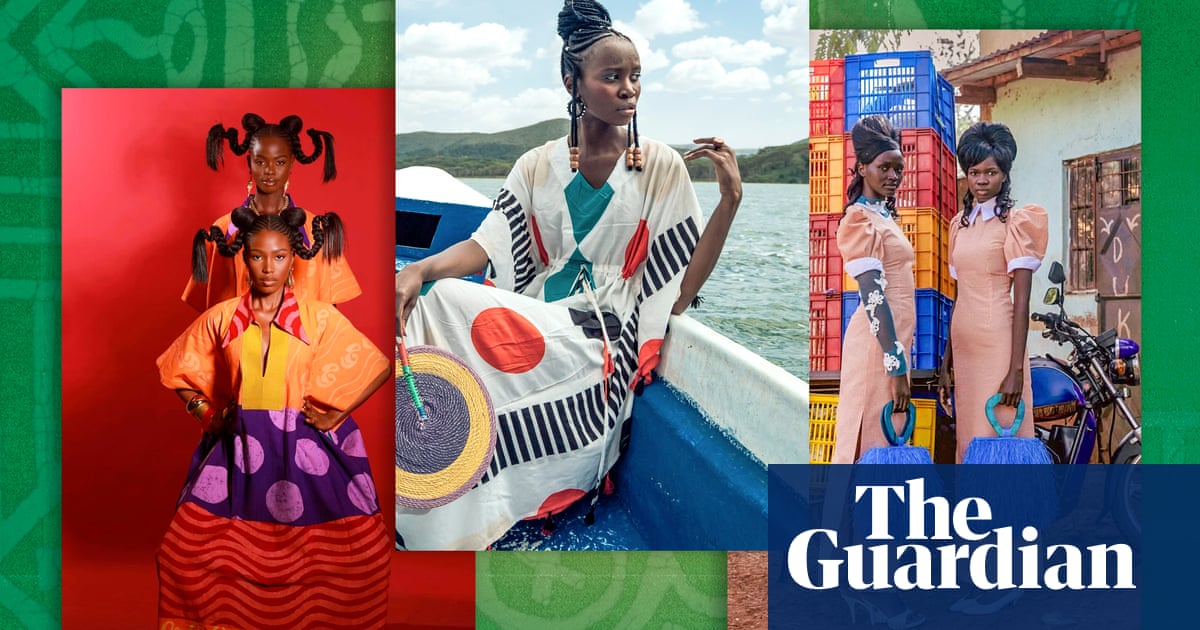Hello and welcome to The Long Wave. This week, I look at the globalisation of African fashion, and how its popularity is part of a wider cultural takeover.
I use the phrase “African fashion” purely for convenience. In reality, there isno such thingthat can be grouped under one name; there are only themes or regional concentrations. North Africa tends to favour a one-piece – a gallabiya, kaftan or head-to-toe swaddle of cloth. Sub-Saharan Africa is less categorisable, with bold prints and waxy or stiff material in west Africa, white linen in east Africa and intricate beadwork in the south.
But these, too, are vast generalisations because even within each country the influences differ. The category is more a vibe than a style – that is to say, you know “African fashion” when you see it. And then there’s the distinction between fashion and everyday wear: gallabiyas, tobes, boubous, church outfits. “Fashion” implies a stylised attempt to channel the genre or interpret it, rather than simply elevate casual clothing. It is a genre that is rising in popularity yet hampered by commercial and stylistic limitations.
African and African-inspired fashion houses, based on the continent and abroad, have not only increased in number over the past two decades – African exports amount tomore than $15bn a year– they have penetrated the luxury sector. African diaspora designers such as the Haitian-Italian Stella Novarino have become behemoths in the industry, and the Ethiopian model Liya Kebede’s brand Lemlem has straddled high end and high street through a recent collaboration with H&M.
Several smaller brands have been going strong for years. Zuri, a brand from Kenya that makesa single trademark patterned dress, has a store in Soho, New York. Dye Lab ships internationally and is holding a series of pop-up stores all over the world in 2025. So numerous and dispersed are these labels that a website,Ichyulu, curates almost 40 of them. The movement reached its cultural watershed at the Met Gala last month, for which the theme wasSuperfine: Tailoring Black Style. Several African designers – including Adebayo Oke-Lawal, the Nigerian head of Orange Culture, and South Africa’s Thebe Magugu – were among those who dressed the stars.
The rise in popularity is partly driven by a surge in purchasing power among the African middle classes, as well as an increase in younger and more affluent consumers of African origin in the diaspora. The mainstreaming of African fashion has followed the mainstreaming of the continent’s music such as Afrobeats. The likes of Wizkid and Burna Boy have pioneered their ownfashion collaborations and iconography,merging cultural influences in apatchwork of styles.
But the rise of African fashion also speaks to two other factors: the growing clout of Black and African-born celebrities, and their adoption of an aesthetic on their own terms, rather than defaulting to the western mainstream. Black celebs have been making more deliberate fashion choices, particularly on the red carpet for Black-led films. The Kenyan-Mexican actor Lupita Nyong’o wore acowrie-shell headpieceat the Wakanda Forever premiere in Los Angeles in 2022 and the Nigerian-born British star of Sinners, Wunmi Mosaku,frequently wears African printsat film launches and festivals.Beyoncé’s collaborationwith Tongoro took centre stage during her 2023 tour. The Senegalese brand hailed the tie-up on Instagram with the caption:“Welcome to the African Renaissance”.
One of the great virtues of African fashion is that it doesn’t do mass-market production. Therefore, the quality is higher, the collections smaller and slower to drop, creating a much less disposable shopping experience. But it’s not cheap. The higher-end brands, which are sold on luxury websites such as Net-a-Porter and featured in Vogue, are inaccessible to the average consumer. Even an item from a smaller brand can cost hundreds of dollars.
Sign up toThe Long Wave
Nesrine Malik and Jason Okundaye deliver your weekly dose of Black life and culture from around the world
after newsletter promotion
There is also the matter of physical presence and logistics. Few of these brands have bricks-and-mortar shops across the continent or in western cities. For those in Africa in particular, online shopping can involve an expensive trial of customs and duties – and you can forget about returns and exchanges. It is a great irony that a fashion movement that subverts western uniform for more authentic styles can sometimes itself end up being exclusive.
That exclusivity can be self-fulfilling. As a consumer, I feel the conceptual elements of African styles can at times overlook the everyday. African prints are indeed bold – the opposite of thepopular “quiet luxury”(and thank God for that) – but there is a middle ground that sometimes is missed. While the few pieces I have hunted down at sales and pop-ups are coveted and loved, I wish there was more that could be blended – a motif, a nod to a tradition, an emblem – that takes the style away from the event and elevates the mundane. African style is not just about statement but also colour, texture, practicality and even a bit of mischief.
To receive the complete version of The Long Wave in your inbox every Wednesday,please subscribe here.
